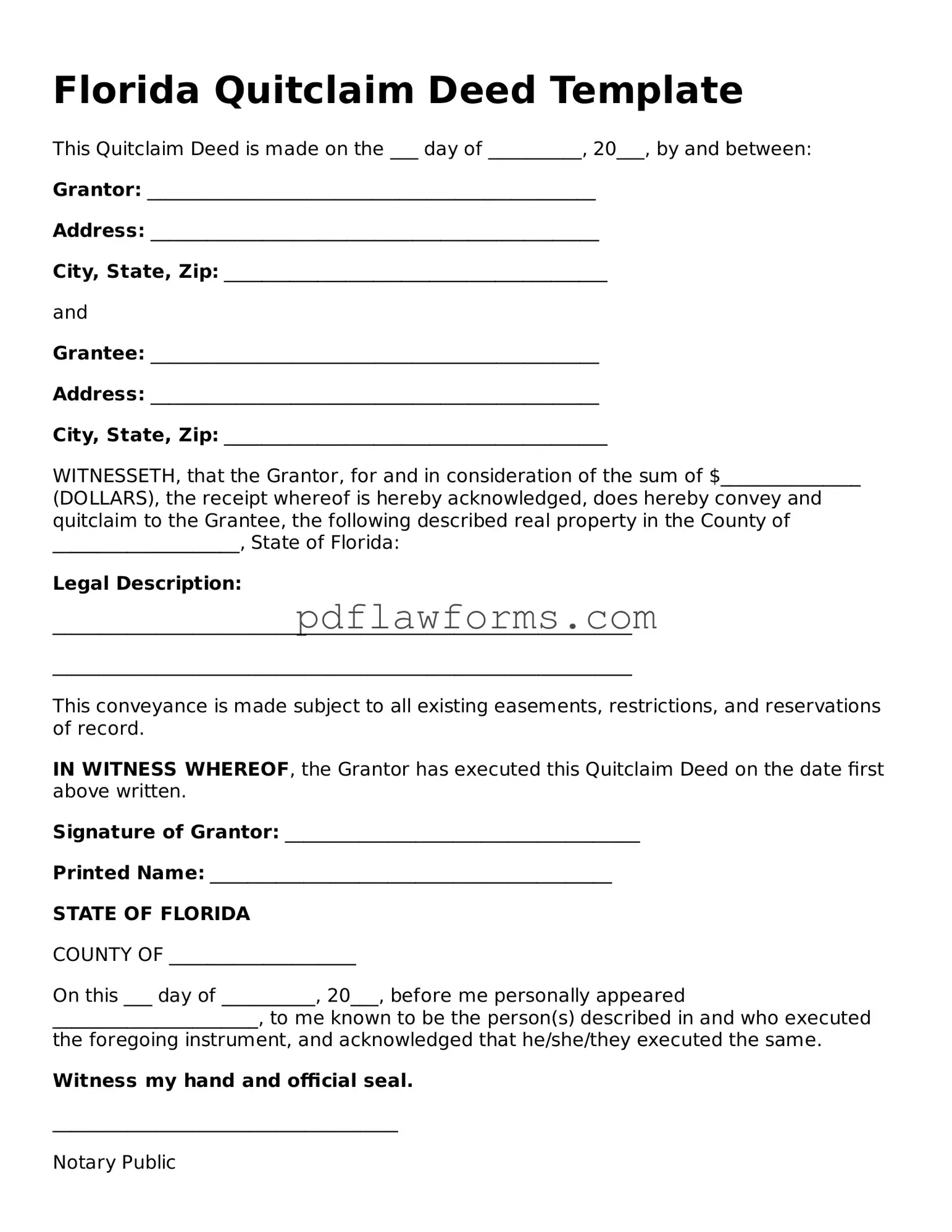The Florida Quitclaim Deed is an essential tool for property owners looking to transfer their interest in real estate quickly and efficiently. This type of deed is particularly useful when the transfer occurs between family members or in situations where the property is not being sold for its market value. Unlike other deeds, a quitclaim deed does not guarantee that the property title is free of liens or other claims; it simply conveys whatever interest the grantor has in the property at the time of the transfer. This means that if there are any existing issues with the title, the new owner may inherit those problems. It’s important to note that while a quitclaim deed can be a straightforward solution for transferring property, it does not provide the same level of protection as a warranty deed. Additionally, the Florida Quitclaim Deed must meet specific legal requirements, including proper execution and notarization, to be valid. Understanding these aspects is crucial for anyone considering using this form, as it can have significant implications for property rights and responsibilities.
